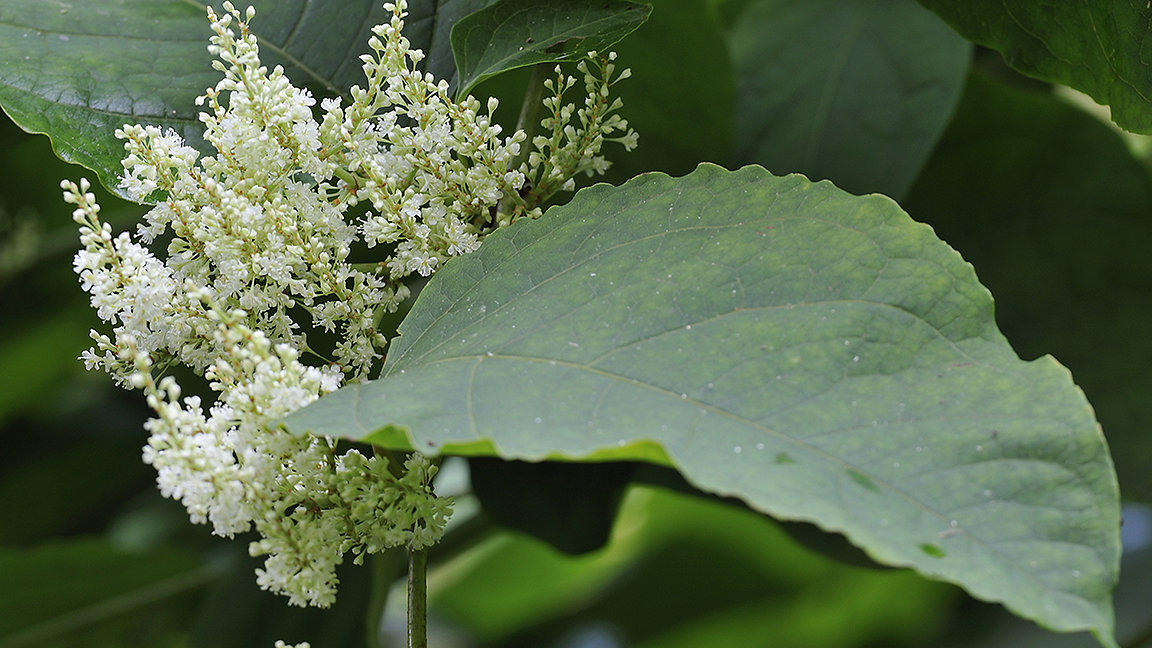
Following recent public consultation, the first edition of Japanese knotweed and residential property RICS guidance note is now being prepared for publication.
There were nearly 600 downloads of the draft, and more than 200 individual comments were made during the consultation. Inevitably, some responses have posed interesting challenges for the working group, such as the practical implementation of a more nuanced approach, and mortgage retentions. However, the overwhelming reaction has been positive, with many stakeholders, including lenders, welcoming its constructive approach to the problems presented by Japanese knotweed.
Objectivity and simplicity
The key purpose of the guidance note is to ensure that valuers continue reporting objectively and consistently to lenders when Japanese knotweed is found during a residential mortgage valuation inspection.
Responding to observations made by the Commons Science and Technology select committee, the guidance note sets out a new, more nuanced and evidence-based process for valuers and surveyors when carrying out a structured assessment, leading to an objective categorisation of any given infestation.
The 7m suggested framework, introduced in 2012 – under which the presence of knotweed need not be reported if more than 7m from a property – has been criticised as a blunt instrument. However, despite its limitations, it has proved straightforward to apply, so similar simplicity has been sought for the new assessment process.
Rather than basing an assessment on distance from buildings or boundaries, however, the new process reflects the actual impact an infestation is having. It uses a decision tree diagram, with detailed notes that define and clarify what each part means. This helps the user place a property in an appropriate management category, ranging from A to D, each having reporting recommendations that relate to the impact of the infestation.
Categorising infestation
When Japanese knotweed is identified on site, the valuer or surveyor responds to just the following decision points. If an infestation has caused visible damage to a structure, it is assessed as being in management category A: action. If structural damage is not visible but an infestation is likely to prevent use of or restrict access to amenity space, the assessment is management category B: action. In both cases, an inspection by an invasive weed specialist is recommended, followed by appropriate remedial action.
If there is knotweed growth on site but it is not causing damage or affecting amenity space, then it falls into management category C: manage. This means that further action may not be required by a lender as a condition of a mortgage advance – a major change from the previous process.
Infestations seen beyond the boundary of the subject property are only given a formal category if they are within 3m of that boundary, and this is management category D: report. Once again, this category may not require any further action as a condition of a mortgage advance. Anything beyond 3m of the boundary is not formally categorised or reported to lenders, although valuers and surveyors should still keep appropriate records in their site notes.
Reporting requirements
The assessment process is primarily intended for providing advice to lending institutions, and individual lenders' policies will be based on the different categories reported by valuers. However, the process also supports the full range of residential inspections and surveys carried out by RICS members, so the guidance note also includes advice on reporting to private clients. While lenders may not always impose mortgage conditions, private clients will in most cases be advised to seek specialist advice when Japanese knotweed is reported.
It is acknowledged that stakeholders in the residential property market will take some time to adjust to the new process; but it is hoped that, in time, Japanese knotweed will become recognised as a problem that can be managed rather than automatically preventing a residential sale.
Additional advice
The document also offers advice on valuing residential properties affected by Japanese knotweed. It describes the problems faced by valuers, partly due to the market perception of the plant but also because the impact of infestations on value can vary significantly depending on a range of circumstances.
It warns that applying a standard percentage reduction or only deducting remediation costs from an agreed purchase price are not appropriate valuation approaches, and it briefly summarises a range of factors that may need to be considered.
In contrast to the 2012 information paper, the guidance note only contains limited coverage of remediation options and nothing about identifying Japanese knotweed. However, working closely with RICS the Property Care Association (PCA) has issued an informative paper, Japanese Knotweed – Guidance for Professional Valuers and Surveyors, to complement the guidance note, which deals with these and other topics in detail.
Ongoing research and other developments will probably mean remediation strategies need to be modified at times, so the PCA paper can be updated as required while the RICS guidance on categorisation and valuers' initial advice for lenders remains unchanged.
'I very much welcome this review; for a long while I have been advocating a more proportionate approach to Japanese knotweed and indeed am highly encouraged by the recognition "that the most appropriate objective when Japanese knotweed is encountered is to ensure proper control rather than to automatically strive for eradication".
'The proposals generally and the management category assessment in particular will encourage valuers and lenders to adopt a more balanced and pragmatic approach to this invasive weed.'
Gary M. Epps MRICS, head valuer of property risk with Nationwide Building Society
The final guidance note should be published later this year and come into effect in 2022.
Philip Santo FRICS is director of Philip Santo & Co and technical author of the guidance note
Contact Philip: Email
